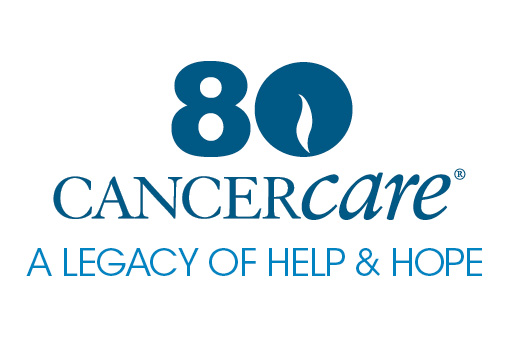All cancer treatments can cause side effects. It’s important that you report any side effects that you experience to your health care team so they can help you manage them. Report them right away—don’t wait for your next appointment. Doing so will improve your quality of life and allow you to stick with your treatment plan. It’s important to remember that not all patients experience all side effects, and patients may experience side effects not listed here.
Side Effects of Radiation Therapy
Changes to the skin are the most common side effects of radiation therapy. Those changes can include dryness, swelling, peeling, redness and blistering. If a reaction occurs, contact a member of your health care team so the appropriate treatment can be prescribed. It’s especially important to contact your health care team if there is any open skin or are any painful areas, as this could be sign of an infection. Infections can be treated with an oral antibiotic or topical antibiotic cream.
Side Effects of Chemotherapy
The side effects of chemotherapy depend on the type and dose of drugs given and the length of time they are used, and can include:
- Fatigue
- Nausea or vomiting
- Hair loss
- Increased risk of infection (from having too few white blood cells)
- Easy bruising or bleeding
- Changes in memory or thinking
- Peripheral neuropathy (numbness or tingling in hands and feet)
Side Effects of Targeted Therapy
Targeted therapy doesn’t have the same effect on the body as do chemotherapy drugs, but they can still cause side effects. Side effects of targeted therapies can include diarrhea, liver problems (such as hepatitis and elevated liver enzymes), nerve damage, rashes, high blood pressure and problems with blood clotting and wound healing.
Side Effects of Immunotherapy
Immunotherapy travels through the bloodstream, helping to prompt an immune response. Sometimes the immune system may attack healthy cells as well as cancer cells, and certain side effects may be experienced, including fatigue, decreased appetite and digestive tract symptoms. The management of these potential side effects is discussed later in this booklet.
Some side effects may occur across treatment approaches. This section provides tips and guidance on how to manage these side effects should they occur.
Managing Digestive Tract Symptoms
Nausea and vomiting
- Avoid food with strong odors as well as overly sweet, greasy, fried or highly seasoned food.
- Eat meals cold or at room temperature, which often makes food more easily tolerated.
- Nibble on dry crackers or toast. These bland foods are easy on the stomach.
- Having something in your stomach when you take medication may help ease nausea.
Diarrhea
- Drink plenty of water. Ask your doctor about using drinks such as Gatorade that provide electrolytes. Electrolytes are body salts that must stay in balance for cells to work properly.
- Over-the-counter medicines such as loperamide (Imodium A-D and others) and prescription medications are available for diarrhea but should be used only if necessary. If the diarrhea is bad enough that you need medicine, contact a member of your health care team.
- Choose foods that contain soluble fiber, like beans, oat cereals and flaxseed, and high-pectin foods such as peaches, apples, oranges, bananas and apricots.
- Avoid foods high in refined sugar and those sweetened with sugar alcohols such as sorbitol and mannitol.
Loss of appetite
- Eating small meals throughout the day is an easy way to take in more protein and calories, which will help maintain your weight. Try to include protein in every meal.
- To keep from feeling full early, avoid liquids with meals or take only small sips (unless you need liquids to help swallow). Drink most of your liquids between meals.
- Keep high-calorie, high-protein snacks on hand such as hard-boiled eggs, peanut butter, cheese, ice cream, granola bars, liquid nutritional supplements, puddings, nuts, canned tuna or trail mix.
- If you are struggling to maintain your appetite, talk to your health care team about whether appetite-building medication could be right for you.
Managing Fatigue
Fatigue (extreme tiredness not helped by sleep) is one of the most common side effects of many cancer treatments. If you are taking a medication, your doctor may lower the dose of the drug, as long as it does not make the treatment less effective. If you are experiencing fatigue, talk to your doctor about whether taking a smaller dose is right for you.
There are a number of other tips for reducing fatigue:
- Take several short naps or breaks during the day.
- Take walks or do some light exercise, if possible.
- Try easier or shorter versions of the activities you enjoy.
- Ask your family or friends to help you with tasks you find difficult or tiring.
There are also prescription medications that may help, such as modafinil. Your health care team can provide guidance on whether medication is the right approach for your individual circumstances.
Managing Pain
There are a number of options for pain relief, including prescription and over-the-counter medications. It’s important to talk to a member of your health care team before taking any over-the-counter medication to determine if it is safe and to make sure it will not interfere with your treatment. Many pain medications can lead to constipation, which may make your pain worse. Your doctor can prescribe medications that help to avoid constipation.
Physical therapy, acupuncture and massage may also be of help in managing your pain. Consult with a member of your health care team before beginning any of these activities.
